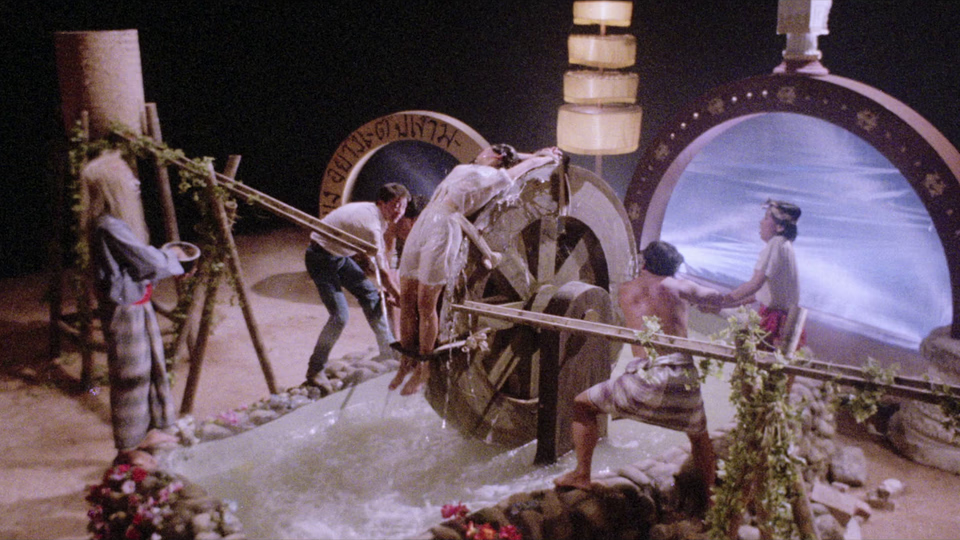Red Spell Spells Red

Here’s a movie that wants to be everything and ends up being nothing much at all. Red Spell Spells Red is a Hong Kong exploitation film that seems to have been assembled from a checklist of what worked in other people’s movies, without any understanding of why those elements worked in the first place.
The story follows a documentary crew from Hong Kong to Malaysia, where they manage to unleash something called the Red Dwarf ghost. The ghost follows them to Borneo and begins the obligatory process of picking them off one by one. But the creators seem less interested in telling this story than in recreating moments from a dozen other films.
We get the low, prowling camera work of Sam Raimi’s The Evil Dead. The exotic menace and animal slaughter of Ruggero Deodato’s Cannibal Holocaust. Scorpions by the bucketful, apparently because someone saw Calamity of Snakes and thought more was better. Even The Omen gets pillaged for its Latin chanting.
The film’s schizophrenic borrowing makes for incoherent storytelling. Characters struggle against forces that may or may not be real. Dreams become reality, then dreams again, with no logic governing the transitions. The movie climaxes with a freeze-frame that suggests the producers simply ran out of money mid-sentence.
Yet there are moments when the madness almost works. A scene involving a possessed editing machine that strangles its operator with film stock shows genuine invention, even if it’s later dismissed as hallucination. The finale, with heroine Poon Lai-Yin strapped to a water wheel cranking her through cycles of submersion and exposure while wearing a strategically transparent white shirt, delivers genuine exploitative spectacle.
But the film’s fatal flaw is its lack of commitment. The Evil Dead worked because it embraced its absurdity with manic glee. Cannibal Holocaust succeeded through uncompromising brutality. Red Spell Spells Red hedges its bets, never fully committing to comedy or horror, camp or sincerity.
Poon Lai-Yin tries gamely in the lead, but lacks the charismatic presence that might have elevated the material. She’s no Bruce Campbell, and this film desperately needs someone who can sell the preposterous with conviction.
For audiences seeking mindless exploitation, this may suffice. It moves fast, delivers periodic shocks, and doesn’t overstay its welcome. But for those hoping for something more than competent hackwork, Red Spell Spells Red spells disappointment.